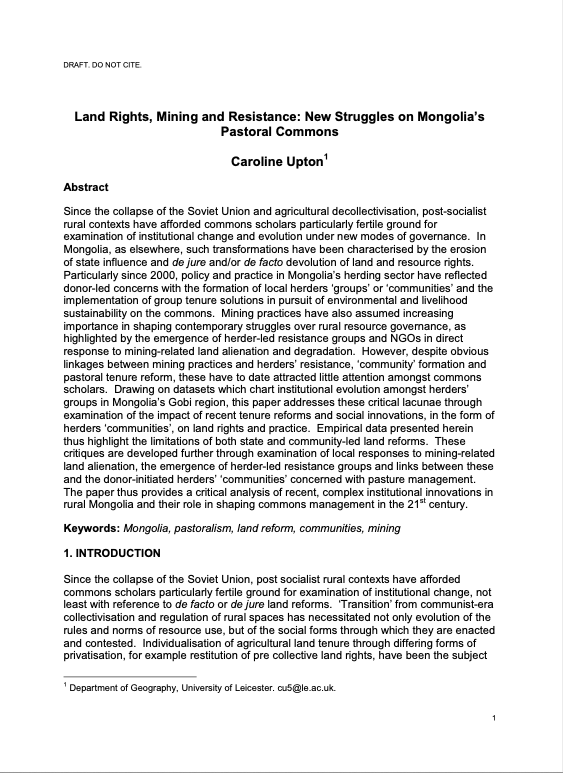Resource information
Since the collapse of the Soviet Union and agricultural decollectivisation, post-socialist rural contexts have afforded commons scholars particularly fertile ground for examination of institutional change and evolution under new modes of governance. In Mongolia, as elsewhere, such transformations have been characterised by the erosion of state influence and de jure and/or de facto devolution of land and resource rights. Particularly since 2000, policy and practice in Mongolia’s herding sector have reflected donor-led concerns with the formation of local herders ‘groups’ or ‘communities’ and the implementation of group tenure solutions in pursuit of environmental and livelihood sustainability on the commons. Mining practices have also assumed increasing importance in shaping contemporary struggles over rural resource governance, as highlighted by the emergence of herder-led resistance groups and NGOs in direct response to mining-related land alienation and degradation. However, despite obvious linkages between mining practices and herders’ resistance, ‘community’ formation and pastoral tenure reform, these have to date attracted little attention amongst commons scholars. Drawing on datasets which chart institutional evolution amongst herders’ groups in Mongolia’s Gobi region, this paper addresses these critical lacunae through examination of the impact of recent tenure reforms and social innovations, in the form of herders ‘communities’, on land rights and practice. Empirical data presented herein thus highlight the limitations of both state and community-led land reforms. These critiques are developed further through examination of local responses to mining-related land alienation, the emergence of herder-led resistance groups and links between these and the donor-initiated herders’ ‘communities’ concerned with pasture management. The paper thus provides a critical analysis of recent, complex institutional innovations in rural Mongolia and their role in shaping commons management in the 21st century.

